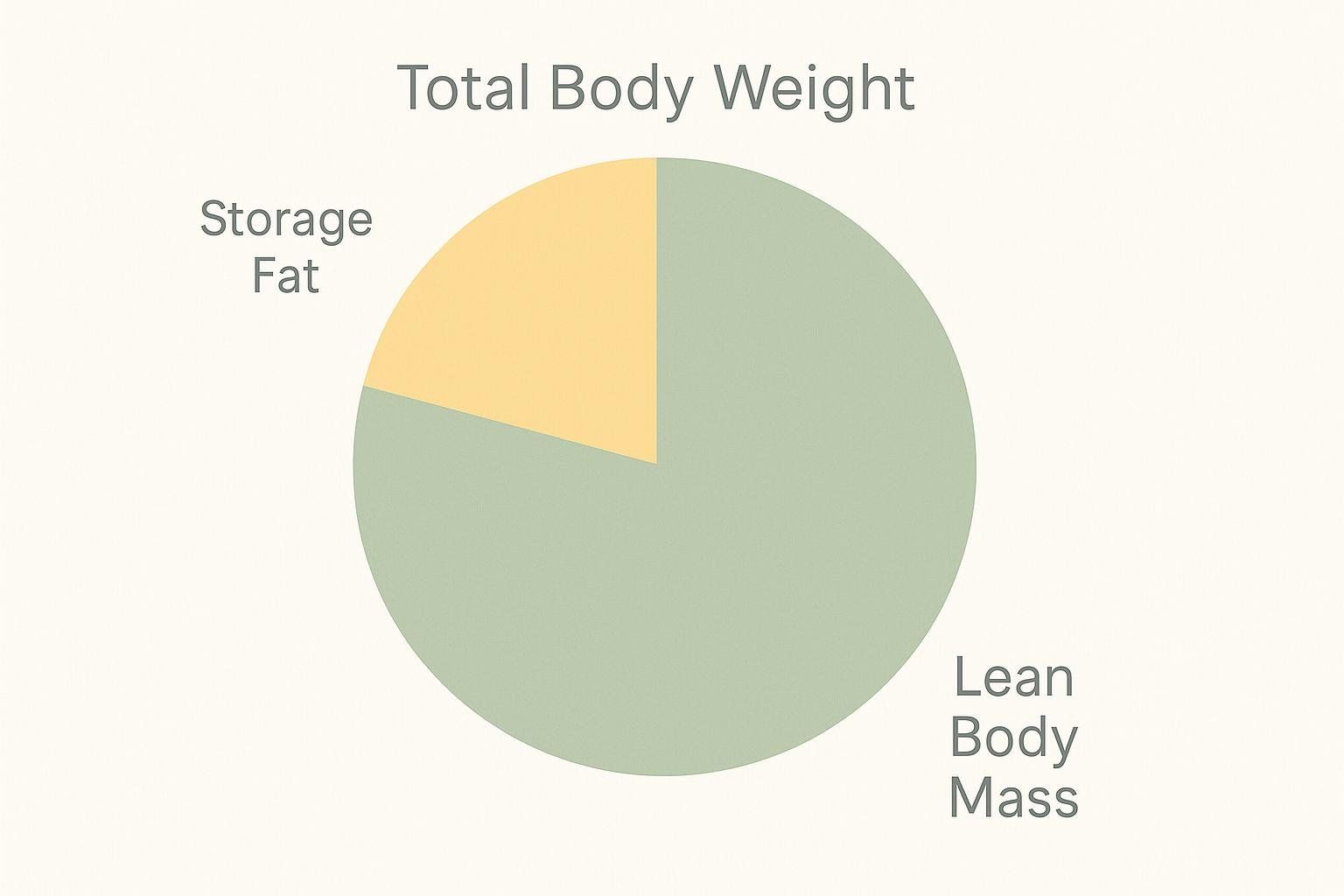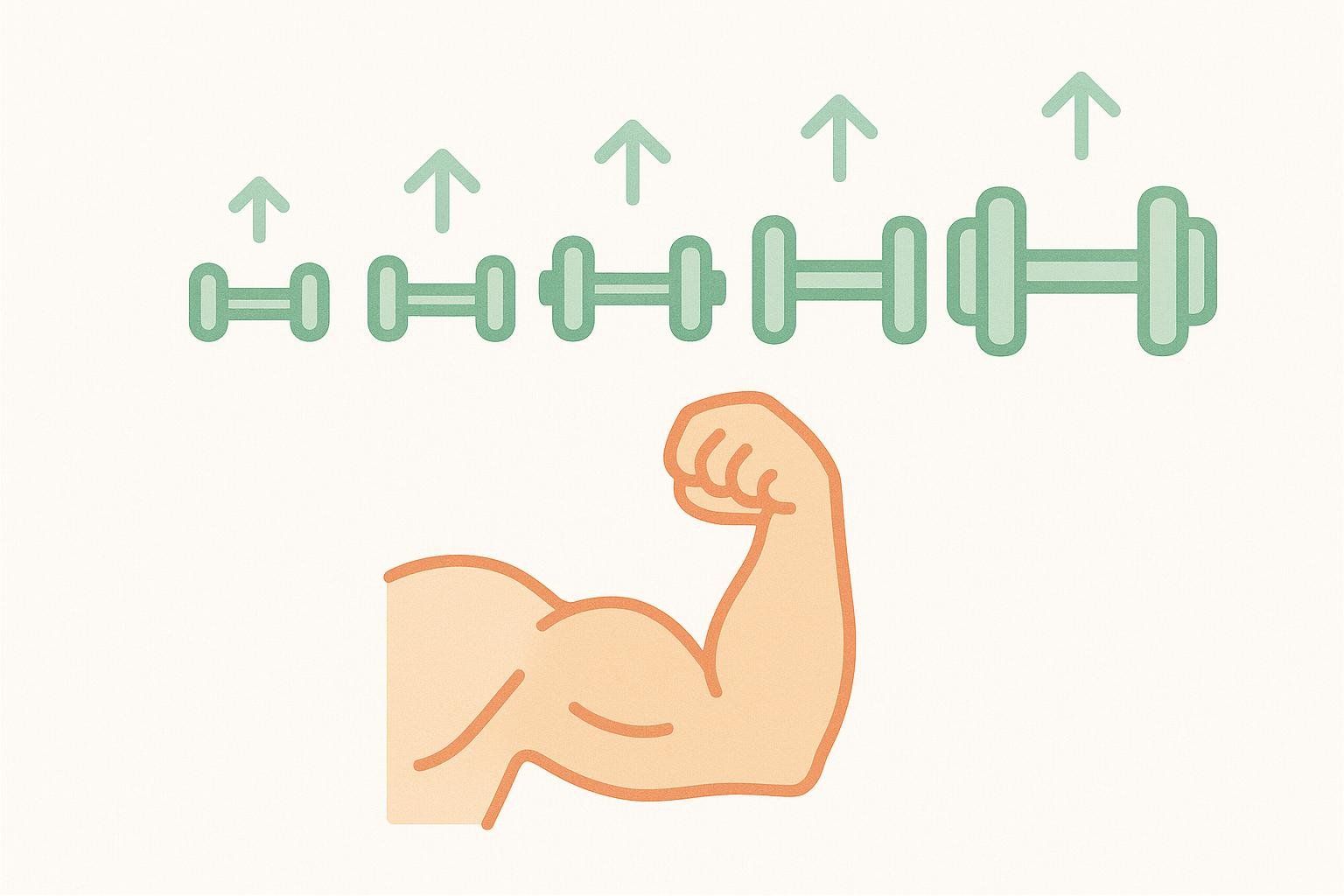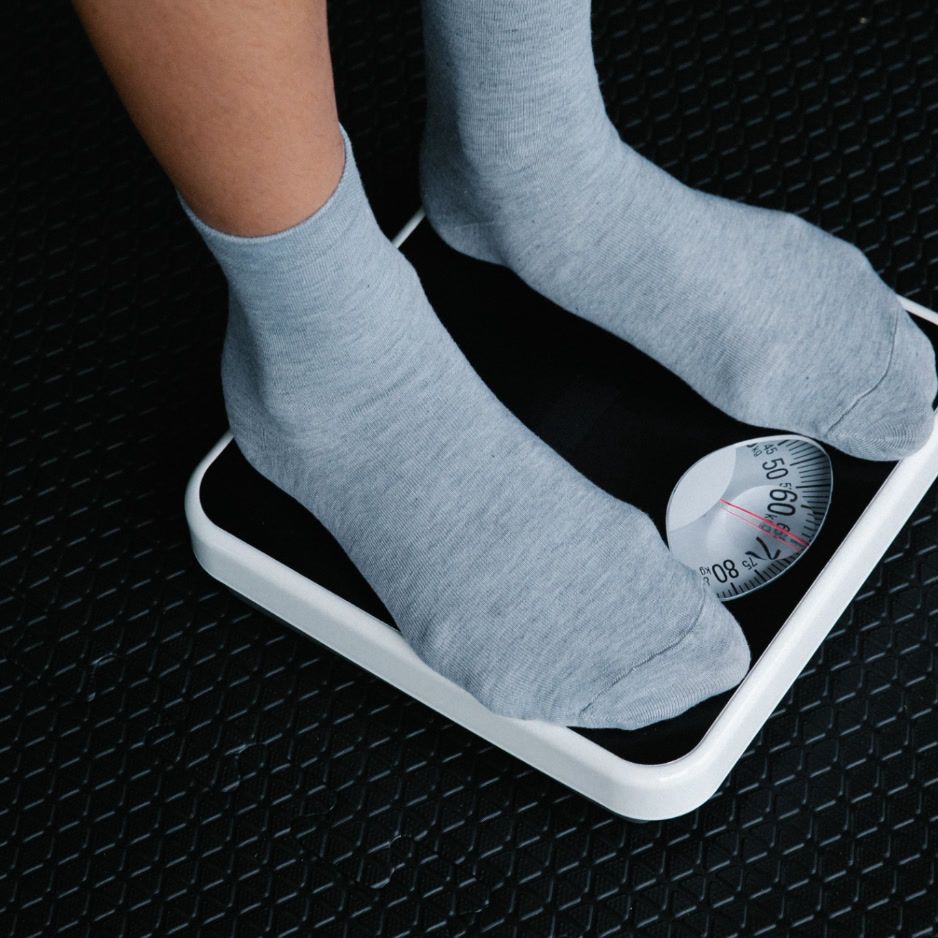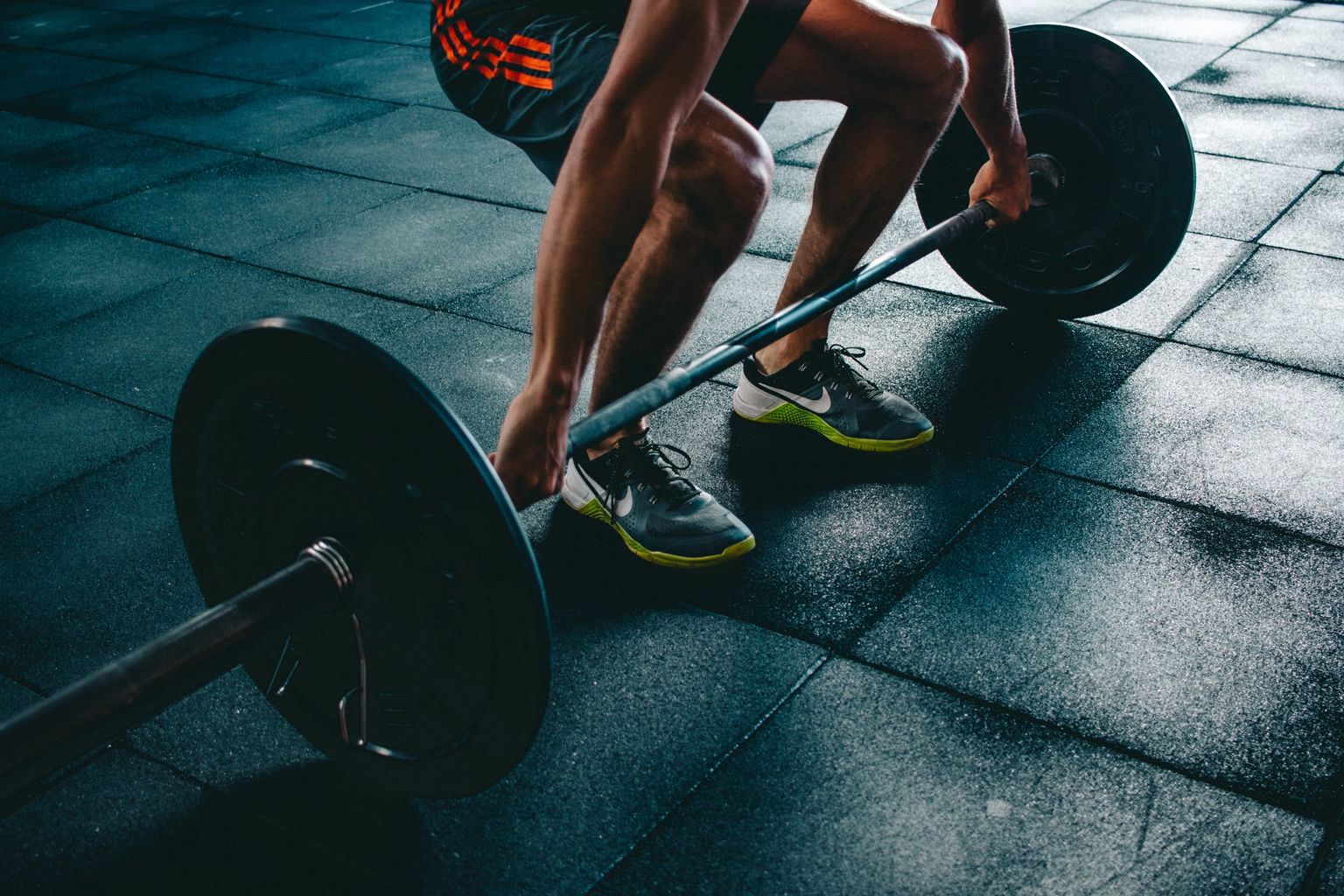Ultimate Lean Body Mass Calculator: Boer, James, Hume & Peters Formulas

Ultimate Lean Body Mass Calculator: Compare Boer, James, Hume & Peters Formulas
Lean body mass (LBM) is your body weight minus storage fat.

It includes muscle, bones, organs, body water, and the essential fat your body needs for basic cellular functions. If you’re ready to find out where you stand, the lean body mass calculator below lets you estimate your LBM in seconds.
Knowing your LBM can help you:
- Set protein and calorie targets with greater precision.
- Monitor whether changes on the scale come from muscle, fat, or both.
- Dose certain medications that are based on lean weight rather than total weight.
Below, you'll find BodySpec’s multi-formula lean body mass calculator. We’ll also explain how the equations work, why results vary, and how a DEXA scan confirms your true lean mass.
Lean Body Mass Calculator
Enter your height and weight below—our calculator instantly shows your LBM using all four formulas.
How the Calculator Works
Important Note on Units
| Formula | Required Weight Unit | Required Height Unit |
|---|---|---|
| Boer & Hume | kilograms (kg) | centimeters (cm) |
| James | kilograms (kg) | meters (m) for (W/h)² ratio |
| Peters | kilograms (kg) | centimeters (cm) |
The calculator automatically converts centimeters to meters for the James formula if you enter height in centimeters, so you can input all data in your preferred unit system without worrying about math errors.
| Formula | Men | Women | Original Purpose |
|---|---|---|---|
| Boer (1984) | LBM = 0.407 × W + 0.267 × H − 19.2 | LBM = 0.252 × W + 0.473 × H − 48.3 | Normalize body fluid volumes for pharmacokinetic studies (Boer 1984) |
| James (1977) | LBM = 1.10 × W − 128 × (W/h)² | LBM = 1.07 × W − 148 × (W/h)² | Body-size descriptor in obesity research (James 1977) |
| Hume (1966) | LBM = 0.32810 × W + 0.33929 × H − 29.5336 | LBM = 0.29569 × W + 0.41813 × H − 43.2933 | Estimate LBM for creatinine-clearance calculations (Hume 1966) |
| Peters (2011) – Children ≤ 14 yr (sex-independent) | LBM = 0.0215 × W^0.6469 × H^0.7236 | Sex-independent formula | Pediatric drug dosing (Peters 2011) |
Why do formulas give different answers?
- Population studied – Each equation was built on a specific demographic.

For example, Hume’s data came from adults with kidney disease, while Peters used measurements from children.
2. Variables and weighting – Boer and Hume rely on linear height-and-weight terms, giving roughly equal influence to stature and mass. James introduces a squared weight-to-height ratio, which can skew results at extreme body sizes.
- Statistical methods – Different sample sizes, regression techniques, and validation tests lead to unique coefficients—even when formulas use the same variables.
Pro-tip: A DEXA scan gives you a direct, gold-standard measurement of lean body mass—no manual math required. Use your DEXA-reported number as the benchmark, then compare it to the formula estimates to see which equation tracks closest for your body.
Measuring Lean Body Mass in the Real World
1. DEXA (Dual-Energy X-Ray Absorptiometry)
- Gold-standard accuracy—error rate ≈ ± 1 % (DEXA accuracy systematic review).
- Separates lean mass, fat mass, bone mineral density, and visceral fat in one 10-minute scan.
- Non-invasive; radiation ≈ eating four bananas—see our radiation explainer.
Curious? Read the DEXA Body Scan: Complete Guide to Procedure, Cost & Booking.
2. Bioelectrical Impedance Analysis (BIA)
- Quick and affordable, but Bioelectrical Impedance Analysis (BIA) often over- or under-estimates LBM by roughly ±8–19 lb (±3.5–8.6 kg) compared with DEXA (Nature 2022).
- Hydration and skin temperature can skew readings.
For a deeper comparison, check out BodySpec DEXA vs. Other Body Composition Tests.
3. Hydrostatic (Underwater) Weighing
- Accurate but requires a water tank and full exhalation.
- Less accessible and uncomfortable for many users.
4. Skinfold Calipers
- Inexpensive and portable.
- Technician skill matters—measurement error is typically ± 3–5 % body-fat compared with hydrostatic weighing (NSCA field-methods review).
What to Do With Your Lean Body Mass Number
Set Smarter Macro and Calorie Targets
Protein recommendations are often expressed per pound of LBM. A common starting point is 0.7–1.0 g of protein per pound of lean mass.

If your LBM is 150 lb, that’s 105–150 g daily. See The Protein Primer for tips on hitting those numbers.
Your lean mass also drives your metabolism: the more muscle you have, the higher your Basal Metabolic Rate (BMR). Using LBM in a BMR or TDEE estimate can tighten calorie targets far better than total weight alone.
Design Your Training Volume
Adaptive gains from strength training are driven primarily by existing muscle mass. Evidence-based guidelines recommend at least 10 weekly sets per muscle group to maximize hypertrophy (Schoenfeld 2016).

Clinical Dosing (Read This Disclaimer!)
Certain drugs—especially anesthetics, chemotherapy, and contrast dyes—are dosed on lean or adjusted body weight. While the formulas above are clinically validated, only licensed healthcare providers should use them for medical decisions.
This article provides educational information and is not a substitute for professional medical advice. Always consult your physician or pharmacist before adjusting any medication.
Tracking Progress Over Time
Online formulas are a convenient snapshot, but body recomposition is a journey. A periodic DEXA scan provides a ground-truth benchmark so you can:
- Confirm whether scale changes are muscle or fat.
- Visualize regional muscle growth (left vs. right limbs).
- Monitor visceral fat for metabolic health.
Ready to see the real numbers? Find a DEXA Scan Near You and book in less than two minutes.
Frequently Asked Questions
What’s the difference between lean body mass, fat-free mass, and BodySpec “lean mass”?
- Fat-Free Mass (FFM) – all body tissue that is not fat: muscle, bone, organs, water.
- Essential fat – the minimal fat your body needs to function (≈ 3 % of body weight in men, 10–12 % in women).
- Formula-based LBM (this calculator) – Estimates FFM + essential fat, predicting your weight minus storage adipose tissue.
- BodySpec DEXA “lean mass” – lean soft tissue only (muscle, organs, and water). It excludes both bone mineral content and all fat.
Because BodySpec’s lean-mass figure removes bone, and the calculator’s LBM retains bone and essential fat, your formula-derived number will usually be higher by bone mass (≈ 6–8 % of body weight) plus essential fat.
How do I calculate LBM if I already know my body-fat percentage?
Use the simple equation:
LBM = Total Body Weight × (1 − Body Fat Percentage)
Example: A 180 lb person at 15 % body fat has LBM = 180 × (1 − 0.15) = 153 lb.
This direct method works when you have an accurate body-fat measurement (e.g., from a DEXA scan or reliable caliper test). The height/weight equations are handy when body-fat data aren’t available or for specific clinical dosing scenarios.
Are these formulas accurate for athletes?
Not perfectly. Very muscular people may have their LBM under-estimated because the equations are based on average physiques. A DEXA scan is recommended for competitive athletes.
How can I convert pounds to kilograms (or inches to centimeters)?
1 kg = 2.2046 lb | 1 inch = 2.54 cm. The calculator widget includes a unit toggle for convenience.
What is a “good” lean body mass?
Context matters. A 180-lb male at 10 % body fat has 162 lb LBM, which is considerably above average for the general adult male population. Normative tables by age and sex are available in What Is Lean Body Mass?.
Takeaway
Estimating lean body mass is step one; verifying it with a DEXA scan and acting on the data is where real progress happens. Use this lean body mass calculator as your first step, then book a DEXA scan and turn your numbers into real results.


